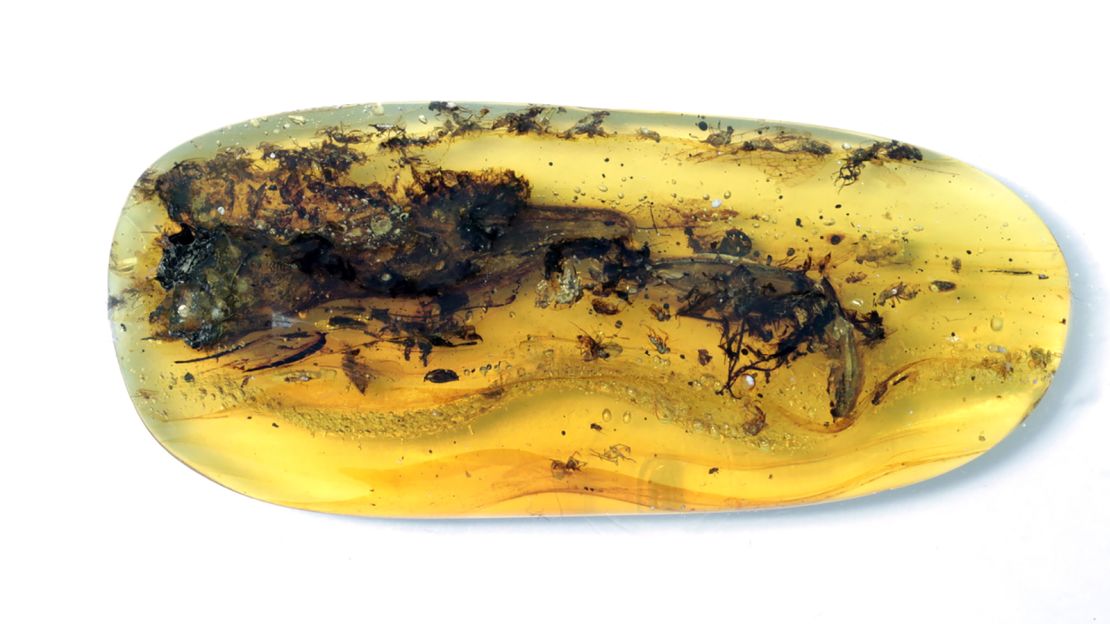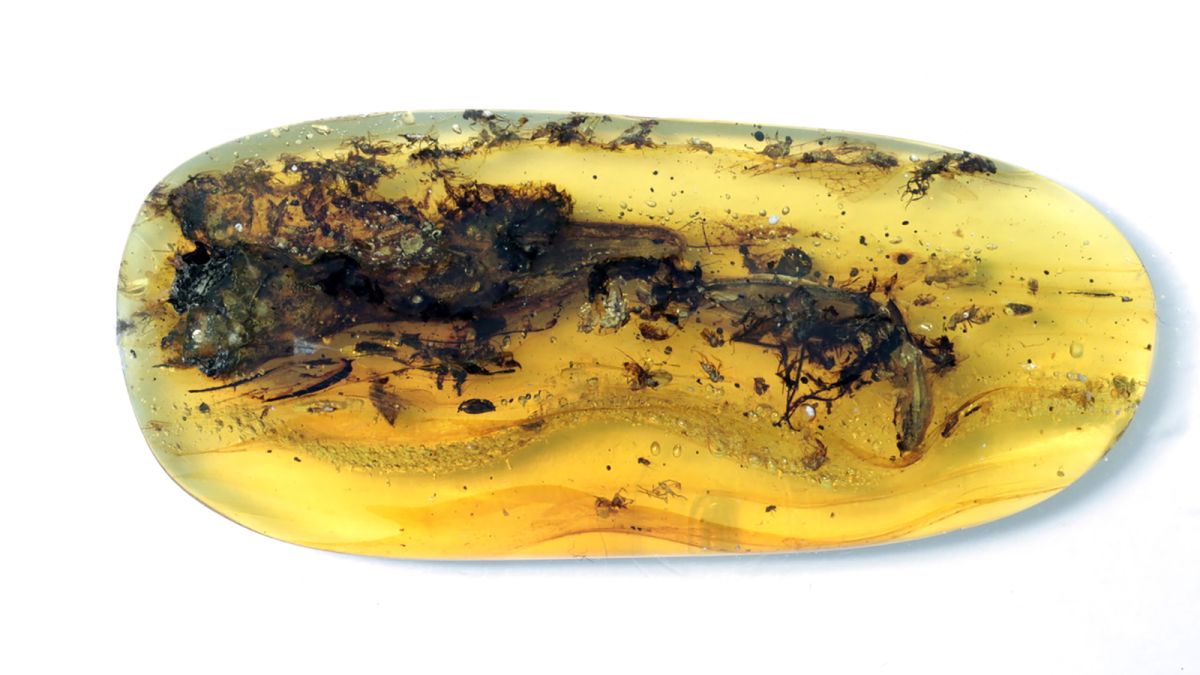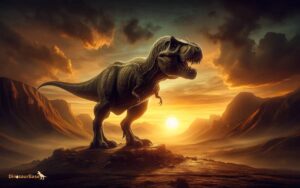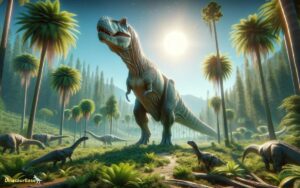Can You Get Dinosaur DNA from Amber? Myth Debunked!
Extracting dinosaur DNA from amber is currently not possible. DNA degrades over time, and the age of dinosaur remnants far exceeds DNA’s half-life.
Imagine being able to unravel the genetic secrets of creatures that last walked the Earth millions of years ago; it’s a scenario that stirs the imagination and fuels scientific curiosity. The concept gained mainstream attention through the fictional works pertaining to the “Jurassic Park” franchise, where scientists revive ancient dinosaurs using DNA preserved in amber.
Yet, reality contrasts sharply with fiction—DNA, the molecule that carries genetic instructions, deteriorates over time. Even preserved in sap that fossilizes into amber, the genetic material of organisms could not withstand the tens of millions of years since dinosaurs roamed the planet. Despite advances in paleontology and genomics, we must acknowledge the limitations imposed by time on DNA preservation, and as such, the retrieval of genuine dinosaur DNA remains beyond our grasp.

Credit: www.cnn.com
The Lure Of Ancient Amber
Imagine holding a piece of history in your hands. Ancient amber does just that by offering a tantalizing glimpse into the prehistoric world. Encasing remnants of a life from millions of years ago, amber truly captures the essence of time in a beautiful, golden package.
Fossilized Tree Resin’s Secrets
Amber starts as sticky tree resin. Over time, it transforms into a stone-like material. This process locks in tiny bits of history, including plants and insects. Occasionally, resin captures something truly extraordinary:
- Pieces of leaves
- Wings of a bee
- Feathers from birds
Each piece of amber is a natural time capsule. Scientists study these to understand Earth’s past life.
Capturing The Imagination
The idea of finding dinosaur DNA in amber excites many people. The thought of bringing dinosaurs back to life has sparked imagination across the globe. The blockbuster “Jurassic Park” made us dream about it. Yet, reality tells a different story. Finding DNA in amber is hard. Here is why:
| Challenge | Reason |
|---|---|
| DNA Degradation | DNA breaks down over time. |
| Contamination | Present-day organisms can contaminate samples. |
| Extraction Issues | Removing DNA without damage is difficult. |
While the hunt for dinosaur DNA continues, the real joy lies in the journey. Amber’s secrets bolster our understanding of evolution and Earth’s history.
Dinosaur Dna: Fact Versus Fiction
The quest for dinosaur DNA has long captivated the minds of scientists and the public alike. Often, we imagine extracting golden strands of genetic material from prehistoric specimens encased in amber, bringing extinct creatures back to life. Let’s explore the scientific reality behind the fantastical images we often see in movies.
Pop Culture’s Influence
Pop culture often blurs the line between science and fiction. Scenes of scientists extracting dino DNA from amber have thrilled audiences worldwide. The idea that we could resurrect dinosaurs feels almost within reach.
- Blockbuster films like Jurassic Park.
- Books and TV shows add to the dinosaur mania.
- Toys and games further spark our imaginations.
This has created a widespread myth about what is possible with ancient DNA.
Reality Of Dna Degradation
DNA does not last forever. Scientific studies show that DNA degrades over time. Several factors affect this process.
| Factor | Impact on DNA |
|---|---|
| Time | Older DNA is more broken down. |
| Environment | Heat and moisture speed up degradation. |
| Exposure | Chemicals and radiation can break DNA. |
Dinosaurs lived millions of years ago. Their DNA has faced a long battle against time and nature. In truth, finding intact dino DNA is highly unlikely. What we see in films is not scientifically accurate.
The small chance of DNA surviving in amber is not the same as finding a viable genome. Most of the organic material in amber is long gone. The dream of dinosaur revival remains in the realm of fiction.
Understanding the difference between what we wish could happen and what can happen is key. Science has its limits. The world of extinct species, however, still holds many secrets to uncover — with or without DNA.
Unveiling The Amber Myth
For decades, amber has been at the center of a captivating debate. Could we really extract dinosaur DNA from insects trapped within? The glittering allure of amber preservation has inspired scientists and dreamers alike. Yet, separating fact from fiction is vital in understanding our natural history.
Origin Of The Misconception
Fueled by blockbuster movies and widespread enthusiasm, the legend that amber could hold the key to bringing dinosaurs back has endured. Cinematic images of ancient mosquitoes filled with dino blood sparked imaginations but lacked a basis in scientific reality. The scientific community constantly battles such enchanting myths with evidence and research to uncover the truth.
The Role Of Paleogenetics
Paleogenetics, the study of the past through genetic analysis, has made incredible advances. Researchers have managed to extract DNA from specimens preserved in colder environments, not amber. DNA degrades over time, and the warm, resinous tomb provided by amber is unfortunately not suitable for such preservation. Here’s a snapshot of what paleogenetics has achieved:
| Preservation Medium | Oldest DNA Sample |
|---|---|
| Permafrost | 700,000 years old |
| Cave Environments | 400,000 years old |
| Amber | DNA not viable |
Amber’s beauty is undeniable, but its role in DNA preservation is misunderstood. By exploring the truths behind paleogenetics, the dreams of dinosaur recreation must face the reality of scientific limitations.
The Science Of Dna Preservation
Preserving DNA from the ancient world is a complex task. Scientists need to overcome many hurdles. Imagine locking something precious in a safe for millions of years. DNA is like that treasure. But even the best safes can rust over time. Amber is considered nature’s time capsule. But can it truly preserve dinosaur DNA? Let’s delve into the science behind DNA longevity.
Limitations Of Genetic Material
DNA degrades over time, making long-term preservation a challenge. Various factors cause this breakdown. This includes exposure to heat, water, and oxygen.
- Chemical Breakdown: Over time, DNA molecules can break apart.
- Environmental Factors: Sunlight and microbes aid DNA loss.
- Preservation Methods: Not all methods protect DNA equally.
- Age of the Specimen: Older specimens likely have more degraded DNA.
Factors Affecting Dna Longevity
Several elements influence how well DNA can stand the test of time. Understanding these can help us assess the potential of recovering ancient DNA.
| Factor | Influence on DNA |
|---|---|
| Temperature | Colder conditions slow DNA decay. |
| Preservation Environment | Dry, oxygen-free places are best for DNA. |
| Time | The longer the time, the less DNA survives. |
| Exposure to Elements | Water, oxygen, and radiation speed up DNA deterioration. |
For DNA in amber, these factors must be just right. Yet, amber’s promise might be left unfulfilled. It’s like finding a safe in perfect condition, but with the treasure inside already vanished.
Modern Methods In Fossil Study
Digging into the past, scientists have always dreamt of unlocking the secrets held within fossils. With the rapid development of technology, the study of ancient life forms has evolved tremendously. Today, scientists use cutting-edge tools and methods to extract and analyze DNA from fossils, aiming to peer millions of years back into Earth’s history. Among the most intriguing prospects is obtaining dinosaur DNA from amber – a concept popularized by science fiction but rooted in genuine scientific curiosity.
Technological Advances
New technologies are revolutionizing fossil research. These advancements allow scientists to go beyond the limitations of traditional paleontology. Let’s look at some key developments:
- High-resolution Imaging: Provides detailed views of trapped organisms.
- Mass Spectrometry: Identifies the molecular composition of samples.
- Next-generation Sequencing: Sequences DNA from ancient organisms efficiently.
These technologies help scientists explore the ancient biological world more deeply than ever before.
Alternative Sources For Ancient Dna
Finding DNA in amber is a rare occurrence. Nonetheless, researchers have discovered other ways to study ancient DNA:
| Source | Details |
|---|---|
| Fossilized Bones | They can retain DNA, particularly in cold environments. |
| Preserved Tissues | Occasionally found in ice or tar pits, offers intact DNA. |
| Sediment Samples | Contain genetic material from ancient flora and fauna. |
While amber offers a visually stunning snapshot of prehistoric life, other sources are providing valuable genetic data for study.

Credit: www.cnn.com
Implications For Cloning Dinosaurs
The prospect of reviving prehistoric creatures sparks vivid imaginations across the world. Fiction portrays dinosaur cloning as simply extracting DNA from amber-entombed insects that feasted on dinosaur blood. Reality presents a more complex narrative, one brimming with scientific and ethical conundrums.
Challenges In De-extinction
DNA degradation tops the list of hurdles. Over millions of years, DNA breaks down and chemical changes render it unviable. Scientists must find intact genetic sequences which is highly improbable. Additionally, the absence of a complete genome makes it extremely challenging to recreate a living organism. Even with a complete genome, current technology cannot guarantee accurate replication of extinct species.- DNA has a limited half-life
- Contamination is often pervasive
- Complete dinosaur genome not yet found
- Technical limitations in cloning extinct species
Ethical Considerations
Ethical dilemmas also add to the complexities. The welfare of potential living dinosaurs must be considered. Scientists debate the implications on ecosystems and existing species. Cloning dinosaurs can lead to unforeseen ecological impacts. It raises questions about the animals’ rights and the purpose behind bringing them back.
| Consideration | Description |
|---|---|
| Animal Welfare | Ensuring humane conditions and treatment for cloned animals |
| Ecological Balance | Assessing the impact of introducing extinct species on current ecosystems |
| Moral Responsibility | Evaluating the justification and motivations behind de-extinction efforts |
The drive to clone dinosaurs extends far beyond scientific curiosity. It touches on the very essence of our relationship with nature and technology. The journey through these ethical mazes is as intricate and perplexing as the quest for dino DNA itself.

Credit: www.nationalgeographic.com
Conclusion
Unearthing dinosaur DNA from amber remains an intriguing concept, yet it is steeped in scientific challenges. While the allure of bringing extinct creatures back to life captivates our imagination, current realities fall short. Advances may one day reshape this narrative, but for now, the dream of dinosaur resurrection from amber persists as a marvel of fiction rather than fact.
Keep turning to science for updates in this fascinating field.




